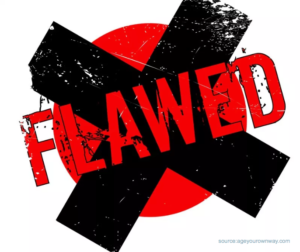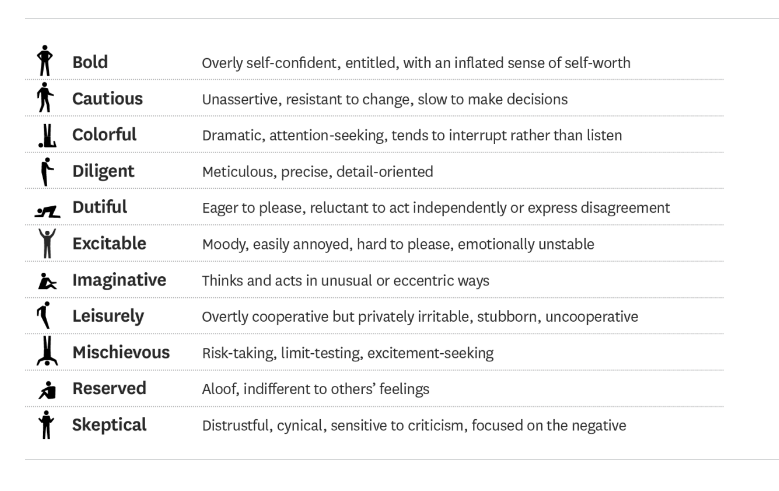Your responses to the question - what is the most problematic leadership trait you experienced with someone you worked for -- were as valuable as those about the best leadership characteristics. While painful to read and more so to endure, there are still learnings present. “What not to do”, particularly when you have lived it, makes a lasting impact. Let's learn from the mistakes of others, even if made against us.
As a follow-on to my question on LinkedIn several weeks ago about what the very best leaders do, I posted a 180-degree question about problematic leadership traits.
Thank you to all that commented on the post or wrote me directly. The responses were impactful. They painted an unflattering picture of what leadership exercised poorly reveals.
Below is the readout on all the responses and a how we might utilize information from the dark side for good.
The Set Up
So here was question 2:
QUESTION: What is the most problematic leadership trait you experienced with someone you worked for?

Themes And Threads
I clustered the responses into six themes or threads.
The responses suggest poor leaders exhibit the following behaviors or traits:
Poor self-management – this covers a host of leadership sins such as no empathy or concern for people, unpredictable emotions and reactions, and favoritism.
Need for control – micromanaging was mentioned numerous times. It is insidious and zaps the life out of people. Other examples include needing to actually show who is in control and being rigid in approach for no substantive reason.
Not listening -being a terrible listener in the moment of conversations is one part of this. The other is not listening to what’s going on, the drumbeat of an organization.
Dishonest/untrustworthy – this includes “boldface” lies as well as saying one thing to one group of people and something else to others.
Lack of follow through – this is an offshoot of being untrustworthy. If you say you will follow up or through and you don’t, it’s a problem.
Disinterest or failure to develop people – this comes in the form of holding people back from experiences and assignments or not being committed to developing employees.
Ego – most everyone has some, this is the untamed version that gets in the way.
Self-interest – a version of untamed ego is someone doing only that which is good for them including taking credit for the effort and work of others and managing up over anything else.
No value – the leader who exists but provides no benefit to the people working for them. There are limitless ways to add value; some leaders can’t find one.

My Experience
The fatal flaw I dealt with several times was lack of self-awareness. It rendered with several of the insights cataloged above – ego, self-interest and no follow through.
Not a good combination.
Self-awareness underpins the existence for so many of these. Either people don’t know how they are perceived or they don’t care. I choose to believe the former is more prevalent than the latter.
The latter is a lost cause. And yes, some leaders are entirely lost.
What Struck Me Most
As with the prior set of comments, I didn’t see or observe any trends concerning the demographics. There was an edge to the responses which is understandable given the question. The comments and undoubtedly several emails I received were longer with more details and backdrop.
It speaks to the impact and in some cases, the real distress caused by leaders exhibiting the worst leadership traits. Some ineffective and terrible leaders bear that title on their card.
The printing is the easy part, living the title of leader, not so much.
Leadership Traits That Derail People
So what are the qualities that underpin these negative leadership traits?
Harvard Business Review’s article Could Your Personality Derail Your Career describes 11 “dark-side” qualities that when taken to the extreme, resemble the most common personality disorders. The 11 traits and descriptors are:

It’s important to keep in mind with any of these frameworks upside and downside exist particularly at the extremes. Here are 3 examples:

Regarding the impact of all this in our workplace, the article states:
After profiling millions of employees, managers, and leaders, we know that most people display at least three of these dark-side traits, and about 40% score high enough on one or two to put them at risk for disruption in their careers—even if they’re currently successful and effective. The result is pervasive dysfunctional behavior at work.
There you have it!
None of this is to suggest the problematic leadership traits are okay. Instead, it’s about understanding drivers upstream. Having this in hand not only serves to help you wade through trouble as you find it but also your self-awareness efforts.
Don’t Pay It Forward
I commented in the prior post that we all leave each other better or worse than we enter an encounter, conversation or email exchange. It’s easy to underestimate the power you have to impact someone. The impressions that great or poor leadership leave is a lasting one.
Here we see the dark side, and it is a powerful reminder of what not to do.

There is an intellectual “of course” to this. What ensures you offer something better is being grounded on what you stand for. Cultivating a sense of self-awareness helps you keep it real. See Is Your Leadership Brand Actually What You Think for practical guidance for tangibly working on this.
That’s A Wrap
These results and those from 1 Thing The Very Best Leaders Do – According To You tell a compelling story about what’s possible and the importance of leadership.
We can learn from both ends of the spectrum. One inspires and pulls you in, while the other motivates you to deliver a different reality.
Thanks so much for engaging in the discussion.

